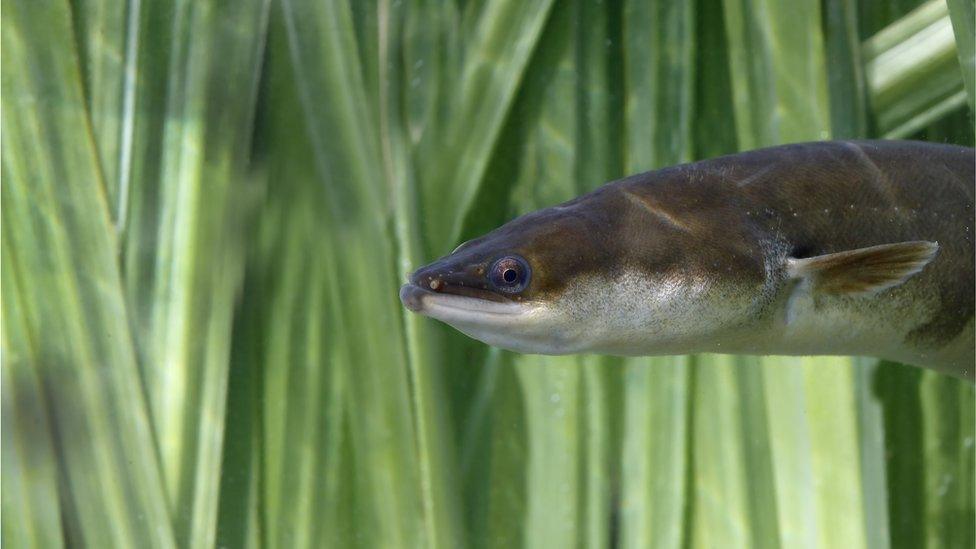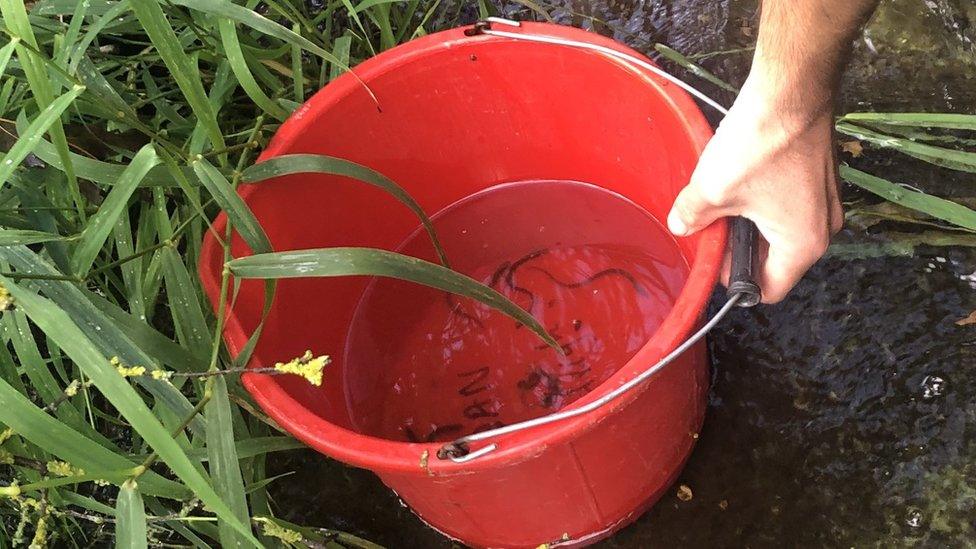Ancient eel migration mystery unravelled
- Published

The European eel is classed as critically endangered
Scientists have unravelled a mystery surrounding one of nature's most incredible journeys.
Every year, eels leave European rivers to travel in an epic migration to the Sargasso Sea in the North Atlantic to breed for a single time, then die.
Although this final destination has long been suspected, until now there has been no direct evidence.
By fitting eels with satellite tags, researchers have tracked the creatures on the final leg of the route.
And they say the information will help in the conservation of the critically endangered species.
"This is the first time we've been able to track eels to the Sargasso Sea and we are delighted we have the first direct evidence of adult European eels reaching their spawning area," said Ros Wright of the Environment Agency, who led the research.
"Their journey will reveal information about eel migration that has never been known before."

Eel migration routes to the Sargasso Sea
The European eel faces many hazards throughout its life cycle, including changes to ocean currents caused by climate change, pollution, poaching and obstacles in waterways such as dams and weirs.
Eel specialist at the Environment Agency, Dan Hayter, has been monitoring eels in the River Blackwater in Essex for 20 years and has seen a drastic decline over that time.
"We do catch eels here every single year," he explained. "Compared with the historic numbers, they're very low now, and there's been a 95% decline since the 1980s."
Conservation measures
Eels arrive around the European coast as tiny, fragile and transparent glass eels, having drifted across the Atlantic for two or three years from the Sargasso Sea.
They adapt to freshwater and mature in rivers - growing up to 1m long - until they are ready to swim all the way back to reproduce once and die.

Young eels being counted at the River Blackwater in Essex
Until now, it has been very difficult to study their migration across the ocean; previous studies have tracked adult eels all the way to the Azores, but from there the trail went cold.
The researchers have now tagged adult eels in the Azores, showing they can swim all the way to the Sargasso Sea.
"We knew they could get as far as the Azores, but that final leg was just undiscovered country," said Ros Wright.
"We thought if we could tag eels in the Azores then we might fill that gap - and we have managed this - we can confirm we have filled in that final leg of the journey to the Sargasso Sea."
Unravelling the routes taken and locating where eels spawn is critical for understanding the reasons behind their decline and to inform conservation measures.
Mysterious life cycle
The life cycle of the eel has long puzzled scientists. Even the Greek philosopher Aristotle pondered the question of where eels came from, deciding that they sprang up spontaneously from the mud.
Almost 100 years ago, it was assumed that their destination was the Sargasso Sea, in the western Atlantic near the Bahamas, but until now final proof had been lacking.
The research, external is published in the journal, Scientific Reports.
Follow Helen on Twitter @hbriggs.